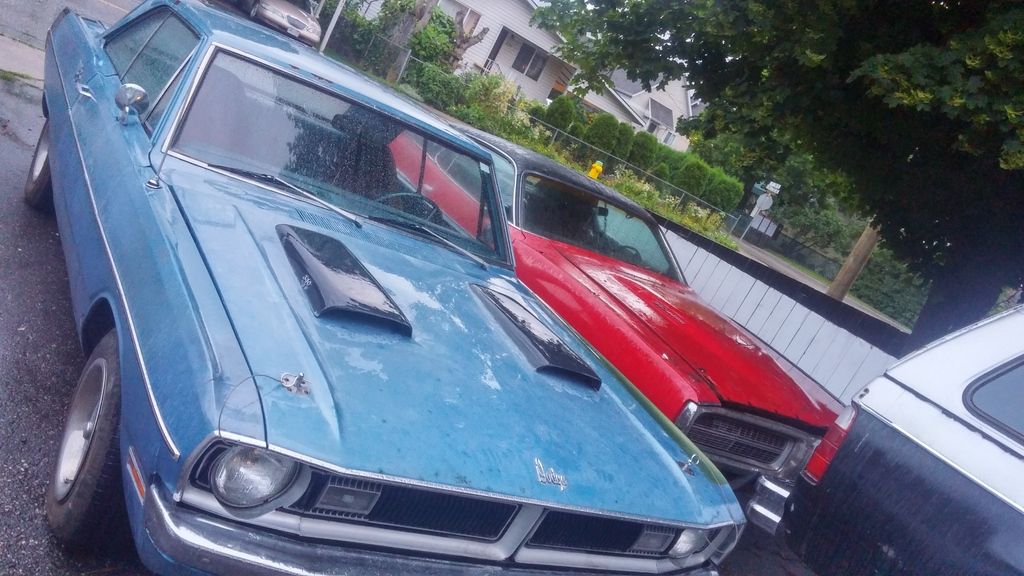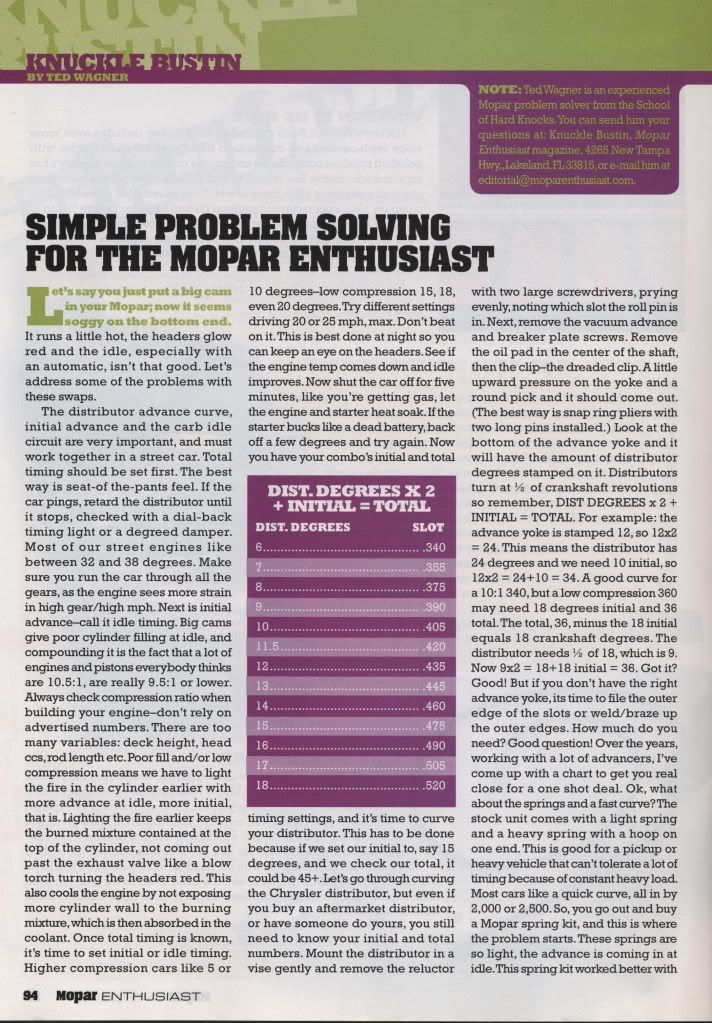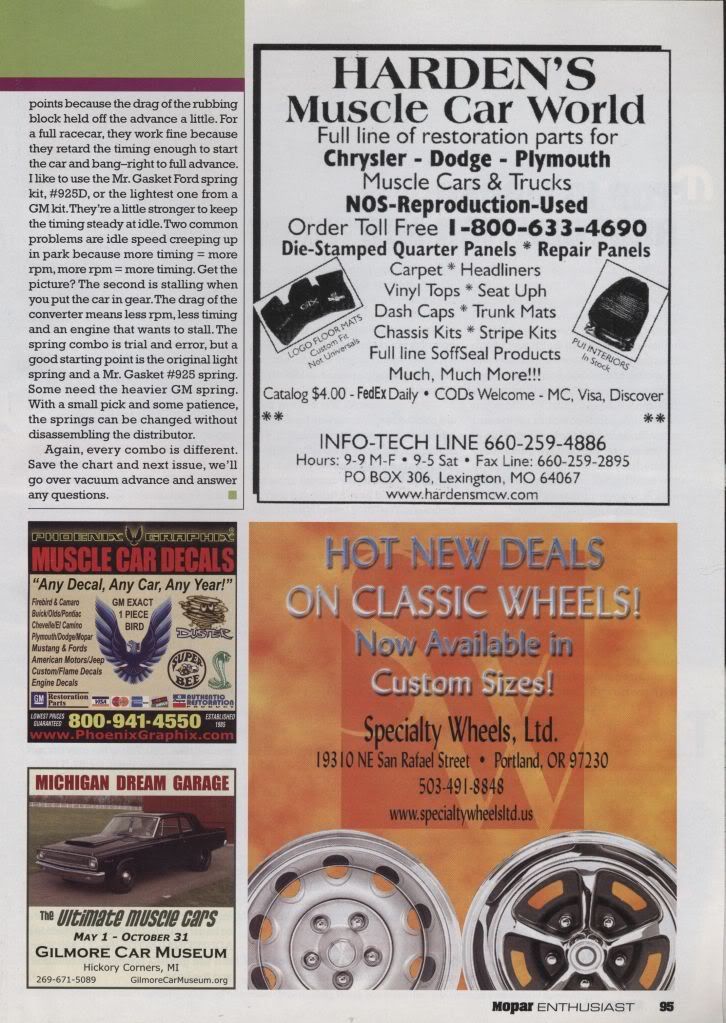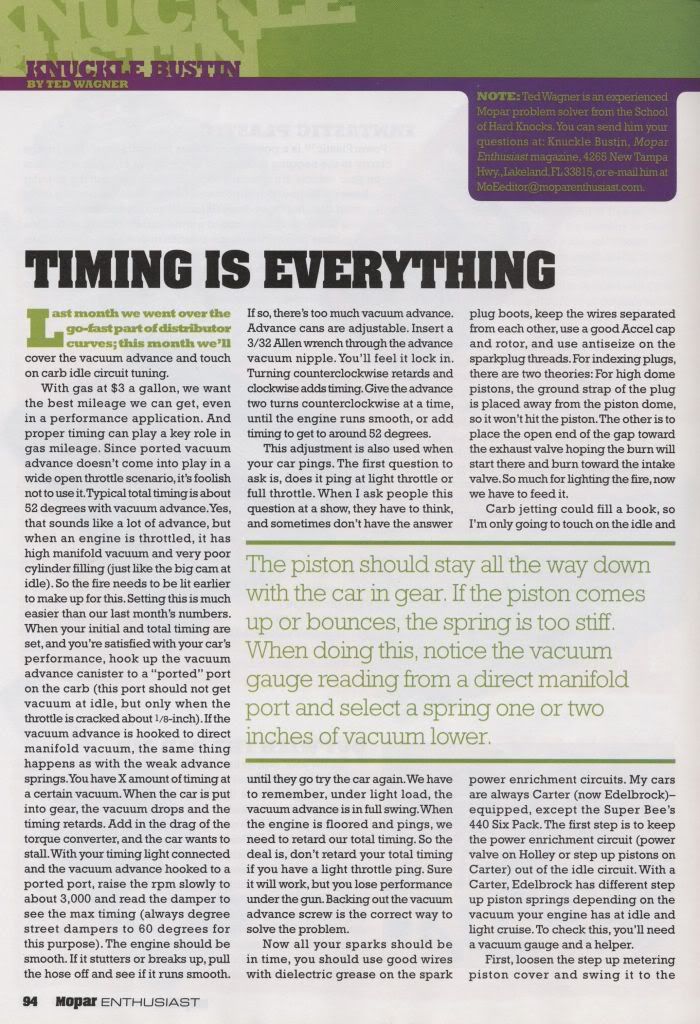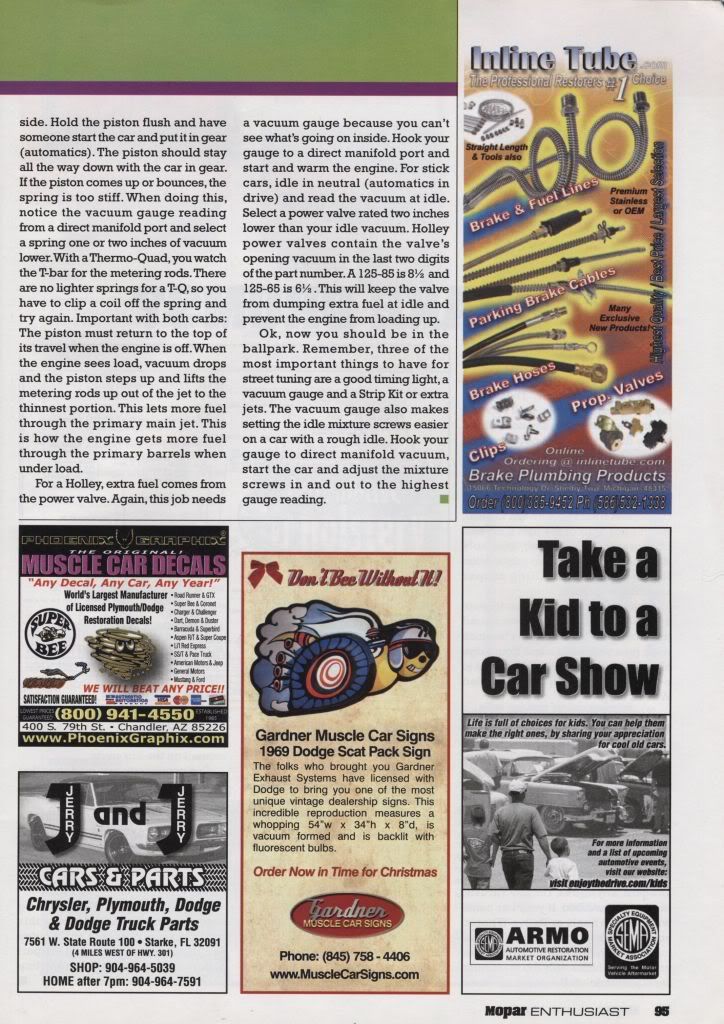Chadderbox70
Well-Known Member
Hi Everyone,
I just got a 1970 Dart Swinger.
It has a non original 360 , an unknown lumpy cam, headers, edelbrock carb, edelbrock intake, full MSD billet distributor with MSD 6A.
Revs up like a mean machine but the car is not rapid to accelerate. I believe it has hwy gearing.
It has a 904 Trans and Im told a 2500RPM torque converter.
What rear gear would be great for me? Id love to hit the 1/4 mile with this car. Dont really care about hwy mileage.
Thanks
Chad
I just got a 1970 Dart Swinger.
It has a non original 360 , an unknown lumpy cam, headers, edelbrock carb, edelbrock intake, full MSD billet distributor with MSD 6A.
Revs up like a mean machine but the car is not rapid to accelerate. I believe it has hwy gearing.
It has a 904 Trans and Im told a 2500RPM torque converter.
What rear gear would be great for me? Id love to hit the 1/4 mile with this car. Dont really care about hwy mileage.
Thanks
Chad

